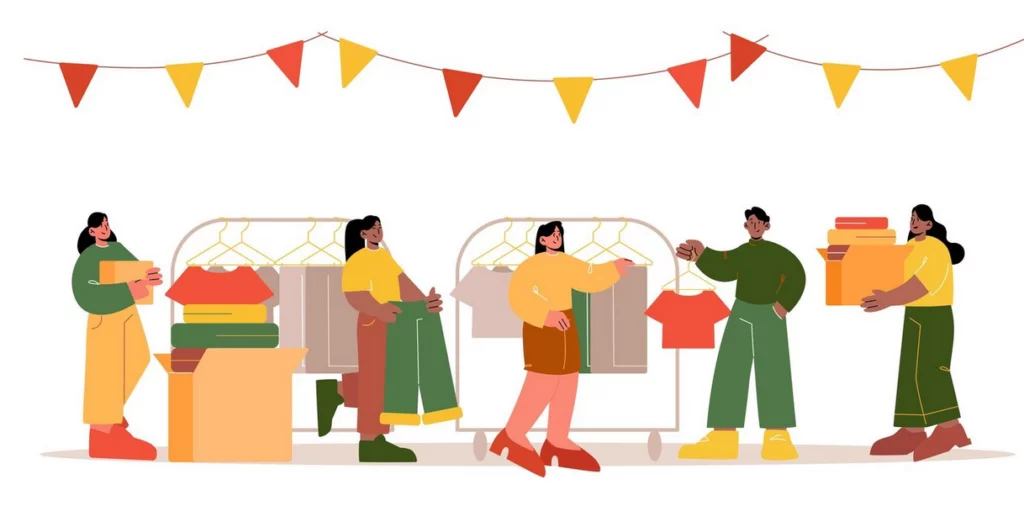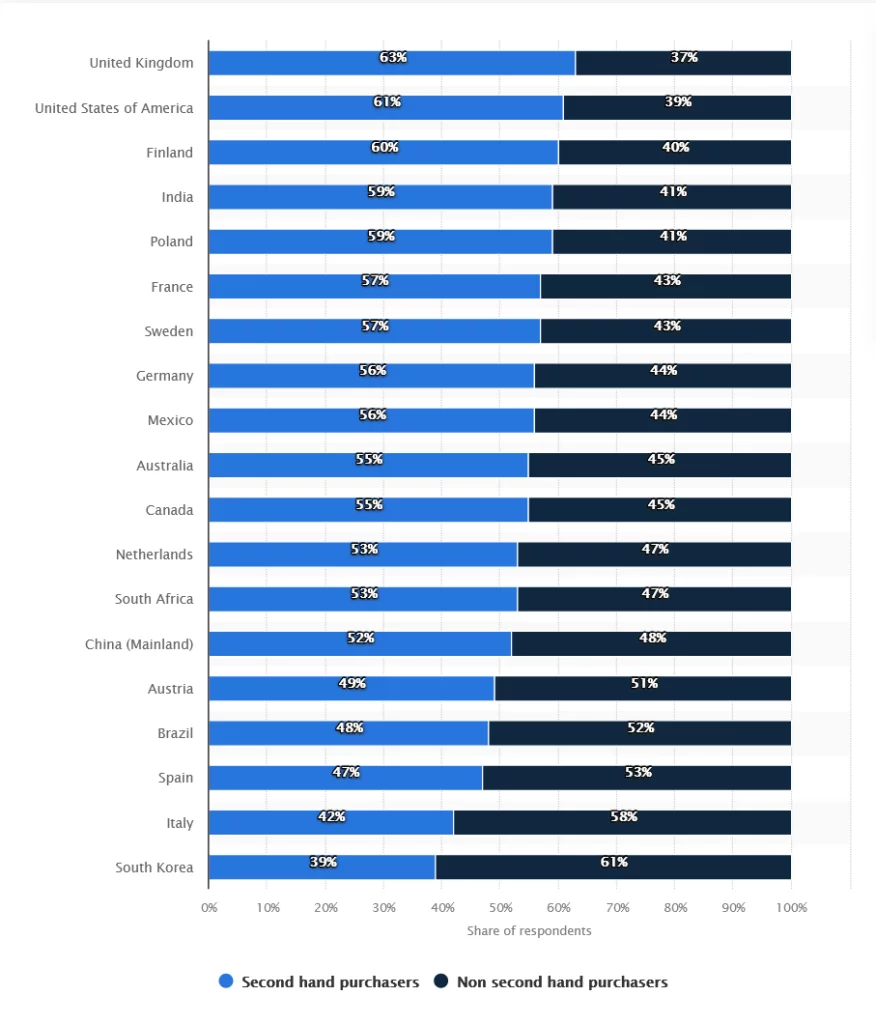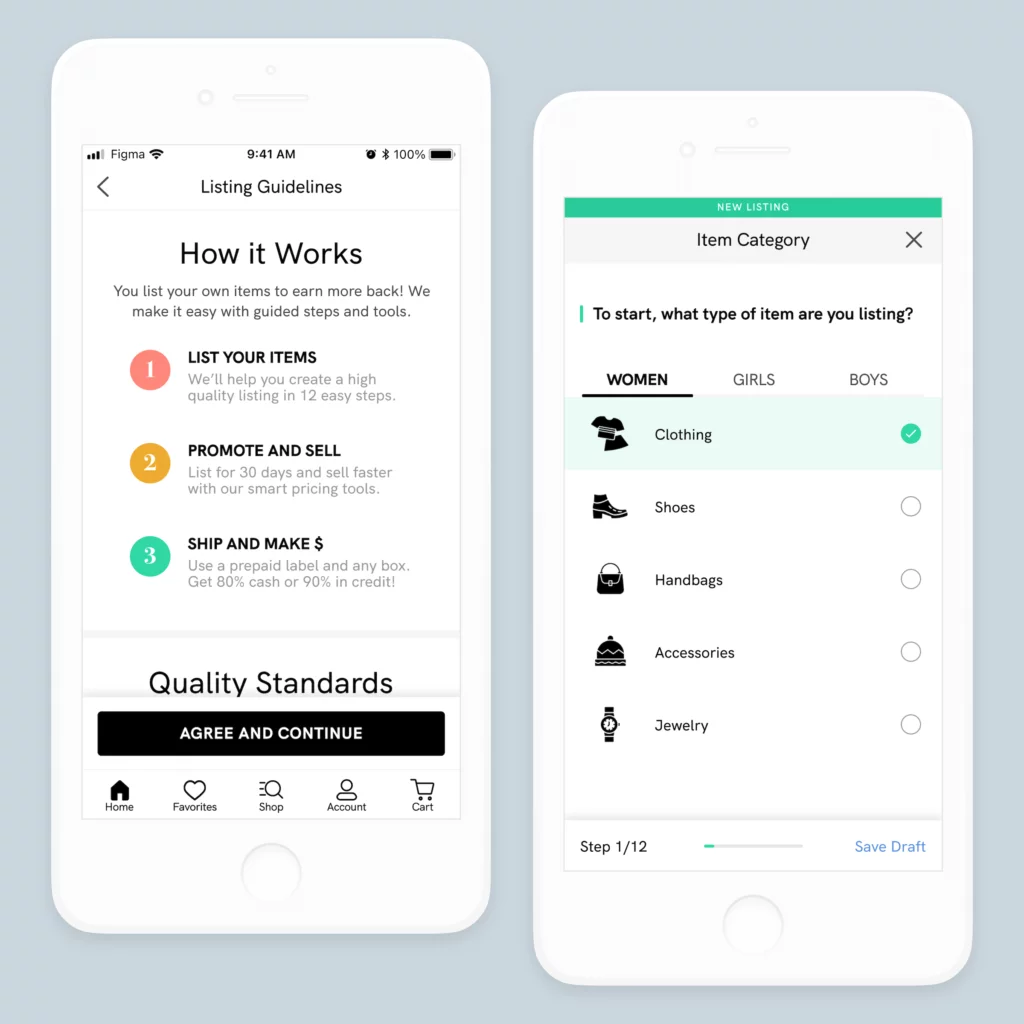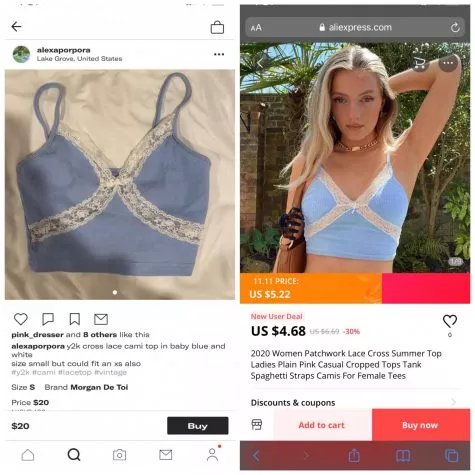If you’ve ever picked up an item tagged with stickers at a garage sale or swap meet, you’ve engaged in recommerce—an emerging trend involving the resale of used or “pre-loved” goods. Thanks to advancements in payment technology and the rise of online recommerce platforms, this trend is gaining traction, particularly within the fashion industry, where it’s outpacing traditional retail commerce in growth.
A recent survey in the U.S. discovered that 74% of consumers have either shopped for or are open to shopping for secondhand apparel. Projections suggest that global sales in secondhand fashion could exceed $200 billion by 2026.
Defining Recommerce:

Recommerce, stemming from the term “reverse commerce,” is reshaping how companies engage with their customers. The practice of reselling serves as a strategy to foster a circular economy and bolster the sustainability of production. It intervenes in the conventional manufacturing and retail systems, disrupting the cycle of production and waste.
The circular economy empowers sustainable brands to transcend the standard “reduce, reuse, recycle” approach by offering a route to minimize waste.
Brands are initiating buyback or trade-in initiatives, offering payment, loyalty points, or discounts to customers, thereby fostering enduring relationships throughout the lifecycle of their products. For instance, companies like Patagonia and Arc’teryx provide store credit in exchange for used items, which are then expertly repaired and resold online.
Rising Trends and Brand Adoption:
Regarded as the “next big thing in fashion,” both luxury and everyday brands are embracing recommerce. The RealReal, a publicly-traded company, relies on meticulous authentication processes, including AI-generated authentication, to resell consigned luxury items.
At scale, processes like refurbishing, mending, repairing, and reselling generate substantial value and sales potential. Platforms like Poshmark, empowering individuals to resell their pre-owned clothing and goods, were highly sought after, leading to Poshmark’s acquisition for $1.2 billion in 2022.
The fusion of technology, sustainability, and changing consumer preferences is driving the recommerce revolution, reshaping consumer behavior and the fashion industry’s landscape.
What Drives Customer Interest in Recommerce?

- Sustainability: Customers prioritize sustainability and reducing environmental impact. Recommerce aligns with these values by promoting reuse, minimizing waste, and supporting a circular economy.
- Economic Benefits: Shoppers appreciate cost savings. Buying secondhand goods often means accessing quality items at lower prices, making fashion and products more affordable.
- Unique Finds and Variety: Recommerce offers a treasure trove of unique, vintage, or rare items that are not easily found in traditional retail, attracting those seeking distinctive pieces.
- Conscious Consumerism: Customers prefer supporting brands and platforms that prioritize ethical practices, including recycling, reducing carbon footprints, and contributing to social causes.
- Engagement and Community: The sense of community and engagement in the recommerce space appeals to customers. Being part of a shared economy and participating in sustainable practices fosters a sense of belonging.
- Curated Experiences: Some recommerce platforms offer personalized experiences, curated selections, and unique stories behind products, enhancing the shopping experience.
Benefits of Recommerce:
Immediate Financial Benefits:
- Revenue Generation: Recommerce offers avenues for additional revenue by monetizing returned, excess, or outdated inventory that would otherwise remain dormant.
- Cost Savings: By refurbishing and reselling products, businesses can reduce disposal costs, avoid markdowns on unsold stock, and potentially lower production expenses through a circular economy model.
- Customer Retention: Initiating buyback or trade-in programs can foster loyalty, encouraging customers to return for future purchases while maintaining engagement throughout the product lifecycle.
Long-Term Strategic Advantages:
- Sustainability and Brand Image: Embracing recommerce aligns with sustainability initiatives, enhancing brand reputation by showcasing a commitment to environmental responsibility.
- Circular Economy Contribution: Participation in it supports the shift towards a circular economy, promoting resource efficiency and minimizing waste, contributing positively to global sustainability goals.
- Adaptability and Innovation: Entering the re-commerce stream encourages innovation in product design, production methods, and customer engagement, fostering adaptability in a changing market landscape.
- Market Differentiation: Brands engaging in recommerce set themselves apart in a competitive market, appealing to eco-conscious consumers and those valuing companies committed to reducing their environmental impact.
Considerations for Building a Re-commerce Loop:
To establish an effective recommerce loop, these considerations are pivotal:
A. Upfront Investment in New Processes:

Launching re-commerce initiatives often requires initial capital for:
- Logistics Management: Establishing efficient logistics to handle incoming, outgoing, and refurbished inventory. This may involve warehouse optimization, transportation logistics, and inventory tracking systems.
- Customer Relations: Developing strategies to engage customers throughout the recommerce cycle. This includes creating seamless user experiences, setting up customer service channels, and fostering relationships to encourage repeat business.
- Integrating New Systems: Investing in technology and software solutions for automating processes, managing inventory, and streamlining operations. Companies like ThredUp exemplify this by leveraging advanced technology for automated sorting and processing of secondhand clothing.
B. Logistics and Repair Challenges:

Refurbishing items for resale presents logistical and repair challenges such as:
- Design Adjustments: Planning and executing design modifications to enhance the quality and attractiveness of refurbished products.
- Repair and Refurbishment Staffing: Employing skilled staff or partnering with repair centers to ensure proficient repairs. Initiatives like The North Face’s repair programs extend product lifecycles, reduce waste, and engage customers in sustainable practices.
C. Managing Expectations of Sellers:

Dealing with individual sellers involves:
- Quality and Resale Value Management: Setting clear guidelines and verification systems to manage expectations regarding item quality and resale value. Platforms like Depop provide guidelines and verification systems to ensure accurate item descriptions and pricing.
D. Closing the Waste Loop:

Addressing items unsuitable for resale involves strategies like:
- Recycling and Repurposing: Implementing take-back programs to recycle or repurpose used items that can’t be resold. IKEA’s take-back programs recycle or repurpose used furniture, minimizing waste.
Learn how to reduce cart abandonment rate here.
How Do You Implement a Recommerce Strategy?
Implementing a re-commerce strategy involves several strategic steps:
- Assessment and Planning:
- Evaluate Feasibility: Analyze your business using tools like Re-Compose to identify areas suitable for recommerce, assessing potential revenue impact and waste reduction possibilities.
- Set Clear Objectives: Define specific and measurable goals with tools such as Goalsetter to guide your recommerce strategy.
- Infrastructure and Logistics:
- Establish Efficient Processes: Invest in logistics and refurbishment tools like Re-Track for streamlined inventory management, refurbishment, and logistics operations.
- Utilize Technology: Leverage automation with software solutions like AutoSort to automate sorting procedures, improving efficiency in managing recommerce inventory.
- Customer Engagement:
- Effective Communication: Use engagement tools like EngageRite to communicate the benefits of re-commerce, emphasizing sustainability, cost savings, and product quality to customers.
- Platform Development: Develop user-friendly interfaces using platforms like RecycleEase to facilitate seamless selling and buying experiences.
- Quality Assurance and Authentication:
- Rigorous Quality Checks: Ensure thorough inspection and maintenance of resold items with tools like QualityCheckPro to maintain product standards.
- Authentication Services: Partner with authentication services such as VeriTrust to verify the authenticity of high-value goods, instilling confidence in buyers.
- Marketing and Promotion:
- Educational Campaigns: Launch campaigns with marketing automation tools like EduConnect to highlight the environmental impact and unique offerings of recommerce products.
- Social Media Engagement: Utilize social media management tools like EngageBoost to amplify your commerce message and engage a broader audience.
- Measurement and Adaptation:
- Data Tracking: Monitor key metrics with analytics tools like DataTrackify to track sales performance, customer satisfaction, and waste reduction.
- Continuous Improvement: Utilize insights from tools like AdaptIQ to adapt and optimize your strategy, improving operational efficiency and customer satisfaction.
- Partnerships and Collaborations:
- Strategic Alliances: Collaborate using platforms like CollaborateHub to extend the reach and impact of your recommerce initiatives through partnerships.
Conclusion:
Consumers’ increasing focus on sustainability has made recommerce a promising avenue for minimizing waste and fostering business growth. Initiating with small steps, such as addressing a single aspect of production, can serve as a significant stride towards embracing recommerce.
FAQs on Recommerce:
Are there challenges in adopting recommerce practices for businesses?
Transitioning to recommerce may involve upfront costs, logistical considerations, and the need for refurbishment facilities or partnerships, posing initial challenges for some businesses.
What role does consumer behavior play in the success of recommerce strategies?
Consumer awareness and support for sustainability are pivotal. Educating consumers about the environmental impact of recommerce and its benefits can drive participation and adoption.
Can recommerce strategies be scaled up for larger business operations?
Yes, recommerce can be expanded gradually by incorporating more product lines, enhancing refurbishment capabilities, and leveraging advanced technology to streamline processes.
What resources or tools are available for businesses interested in recommerce?
Various software solutions, consultancy services, and platforms exist to assist businesses in implementing recommerce strategies, offering tools for logistics, inventory management, and customer engagement.



